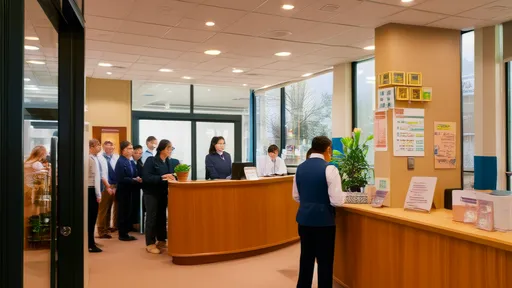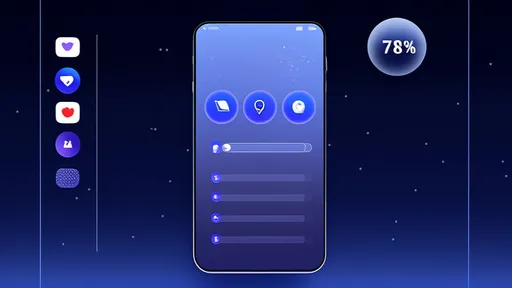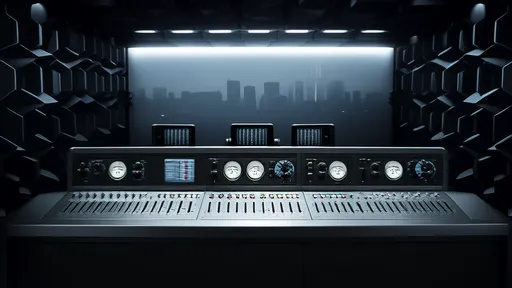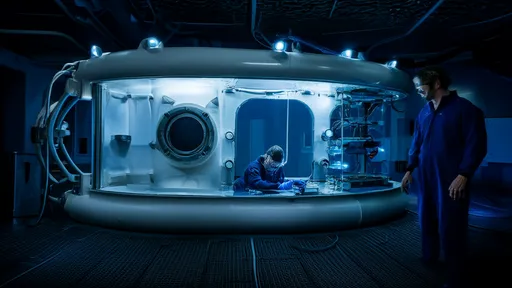The world of spatial audio has undergone a quiet revolution in recent years, with Head-Related Transfer Function (HRTF) technology emerging as the unsung hero behind immersive 3D sound experiences. Unlike traditional stereo or surround sound formats, HRTF-based spatial audio doesn't just surround the listener - it precisely positions individual sound sources in three-dimensional space, creating the uncanny illusion that sounds originate from specific points around the listener's head.
At its core, HRTF represents the complex way in which sound interacts with a listener's unique anatomical features before reaching the eardrums. When a sound wave travels from its source to your ear, it undergoes subtle but significant transformations caused by the shape of your head, the folds of your outer ears (pinnae), even your shoulders and torso. These minute alterations in frequency and timing provide the neurological cues that allow humans to localize sounds in space with remarkable accuracy. Researchers have spent decades trying to mathematically model these acoustic fingerprints to recreate natural hearing through headphones.
The mathematics behind HRTF implementation is both elegant and computationally intensive. Each HRTF dataset comprises thousands of measurements describing how sounds from various directions are filtered by the listener's anatomy. Modern implementations use sophisticated algorithms to interpolate between these measurement points in real-time, adjusting the audio signal with millisecond precision to create convincing spatial effects. The processing involves comb filtering techniques, advanced convolution reverbs, and dynamic crossfeed algorithms that change based on the virtual sound source's position relative to the listener's head.
What makes contemporary HRTF implementations particularly impressive is their ability to account for head movements in real-time. Early VR audio systems suffered from the "front-back confusion" problem where listeners couldn't distinguish whether sounds came from in front or behind. Modern solutions integrate head-tracking data from VR headsets or smartphones, allowing the HRTF processing to adjust dynamically as the user turns their head. This creates an audio environment that remains stable in virtual space rather than turning with the listener's perspective.
The personalization of HRTF profiles represents perhaps the most significant breakthrough in recent years. While generic HRTF models based on average head shapes provide decent spatialization, they fail to account for individual anatomical variations that significantly affect sound localization. Cutting-edge systems now offer personalized HRTF calibration through either detailed acoustic measurements or machine learning algorithms that estimate an individual's HRTF based on photographs of their ears and head shape. Some implementations even allow users to "tune" their HRTF profile through interactive tests that adjust parameters until virtual sound sources align with their perceptual reality.
Gaming and virtual reality have been the primary drivers of HRTF technology adoption, but the implications extend far beyond entertainment. Teleconferencing systems using HRTF algorithms can place each participant's voice at distinct positions around the listener, dramatically improving conversation tracking in large meetings. Audiologists are exploring HRTF-based solutions for hearing aids that could restore natural spatial hearing to individuals with certain types of hearing loss. Even autonomous vehicles are implementing HRTF cues in their warning systems to help drivers localize alerts more intuitively.
Despite these advances, significant challenges remain in HRTF implementation. The computational overhead of high-quality HRTF processing still strains mobile devices, forcing compromises between audio quality and battery life. There's also the psychoacoustic challenge that listeners accustomed to traditional stereo mixes often need an adjustment period to adapt to proper spatial audio rendering. Perhaps most crucially, the industry lacks standardization in HRTF measurement and implementation, leading to inconsistent experiences across different platforms and devices.
Looking ahead, the next frontier for HRTF technology involves dynamic environmental modeling. Current implementations primarily focus on direct path audio from source to listener, but future systems will need to account for how virtual environments alter sound propagation. Imagine HRTF algorithms that can simulate how sounds reflect off walls in a virtual concert hall or are muffled when passing through virtual obstacles. Combined with eye-tracking technology that adjusts audio focus based on visual attention, these advances could blur the line between virtual and physical auditory spaces beyond what most listeners thought possible.
The silent revolution of HRTF technology continues to reshape our auditory experiences in subtle but profound ways. As the algorithms become more sophisticated and personalized, we're moving toward a future where headphones can deliver spatial audio that's indistinguishable from real-world hearing. This isn't just about creating more immersive games or movies - it's about fundamentally changing how humans interact with digital audio across countless applications, from communication to accessibility to artistic expression. The golden age of spatial audio isn't coming; for those with properly tuned HRTF profiles, it's already here.

By /Aug 15, 2025

By /Aug 15, 2025

By /Aug 15, 2025

By /Aug 15, 2025

By /Aug 15, 2025

By /Aug 15, 2025

By /Aug 15, 2025

By /Aug 15, 2025

By /Aug 15, 2025

By /Aug 15, 2025

By /Aug 15, 2025

By /Aug 15, 2025

By /Aug 15, 2025

By /Aug 15, 2025

By /Aug 15, 2025

By /Aug 15, 2025

By /Aug 15, 2025

By /Aug 15, 2025

By /Aug 15, 2025

By /Aug 15, 2025